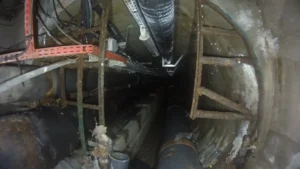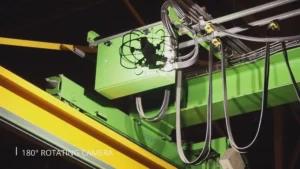Flying in confined spaces is generally more complex than flying outdoors. Although Multinnov aims to make indoor inspections as easy as possible, every pilot will face these three main threats at one time or another:
-
Unlike outdoor flights, the operating area is much smaller. The risk of collision is omnipresent. While the general shape of the structure to be inspected is often easy to control, isolated obstacles such as mast-mounted sensors, support beams or stalactites in natural environments represent a real danger to the machine. It is very important for the pilot to be able to visualize his drone's position in space at all times.
-Darkness
It's rare for equipment to be illuminated during an inspection. It is often necessary to rely on on-board lighting or additional spotlights. Yet this is an essential component of a visual inspection, since lighting determines the pilot's ability to find his way around, the machine's ability to stabilize itself automatically, and above all, the relevance of the images that will be used for the report and the decisions that will follow the inspection.
-presence of dust or water
It's highly likely that one or both of these elements are present in the inspected property, and each carries its own set of specific hazards and maneuvers.
If water falling from the ceiling isn't a problem in itself, its presence beneath the drone can prove more dangerous. The air expelled by the propeller can cause droplets to form, eventually blinding or disrupting stabilization. It's better to maintain altitude, even if there's only a few millimetres of water on the ground.
Dust, on the other hand, is not a threat in itself, since the lighting on Stereo2 is designed to pass through it. It's up to the pilot to assess whether the presence of dust could become problematic at any given moment, and to take the appropriate decisions.
The Stereo2 is tailor-made to overcome all these threats, as you'll see in the following video of flying in a dusty environment in the dams of southern Switzerland.




